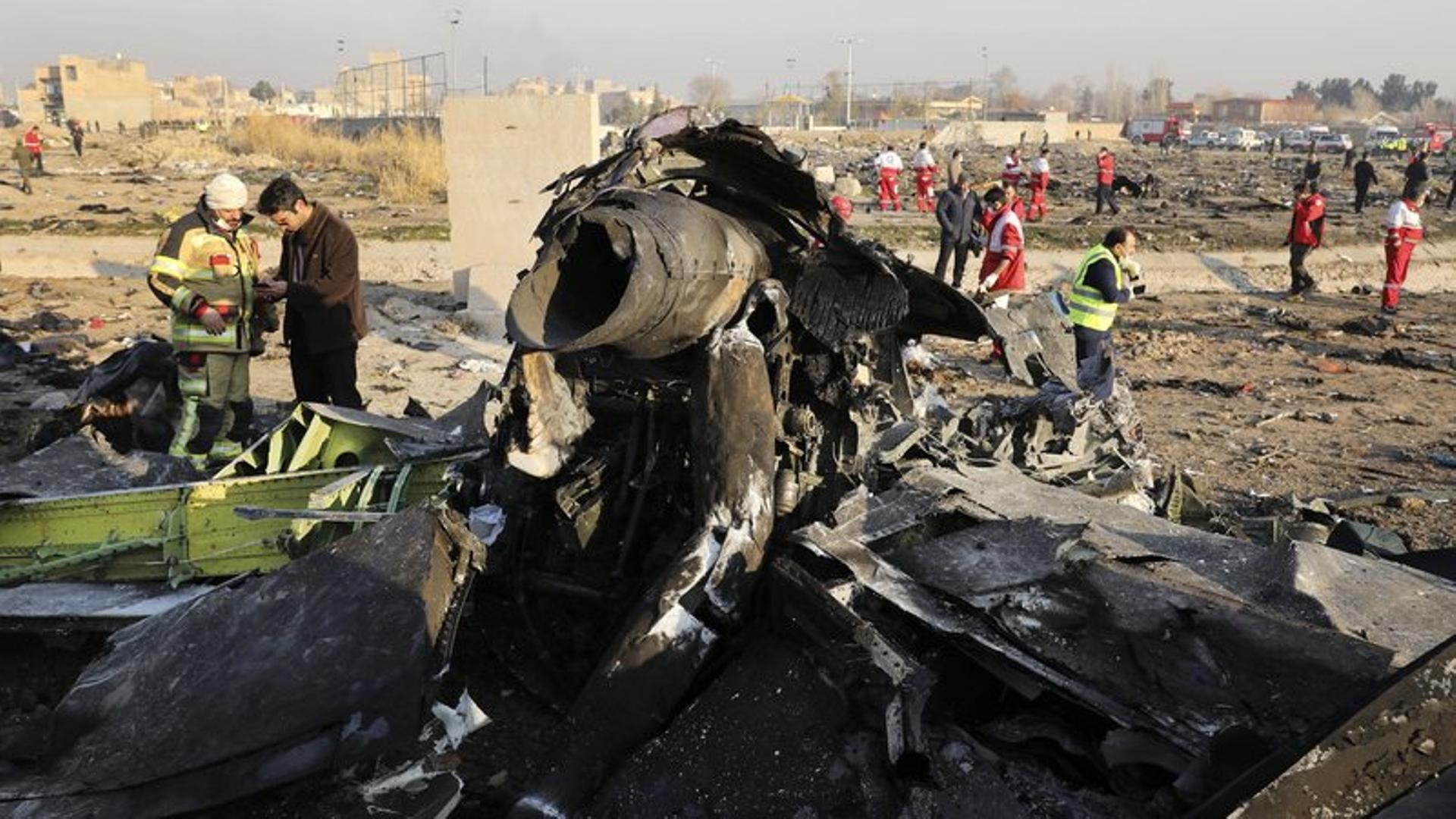Evidence of a string of errors reignites anger against the Iranian Revolutionary Guard Corps for the tragic downing of the flight.
Almost nine months after the shooting down of the Ukrainian International Airlines flight 752 by Iran’s Revolutionary Guards (IRGC) which killed 176 passengers, Iran’s Civil Aviation Organisation (CAO) has announced the information recorded in the two black boxes.
Flight data reveals that after the first missile hit the plane, the passengers were still alive for 19 seconds and if the second missile had not been fired the pilot could potentially have diverted the plane and escaped the tragedy.
This has caused a renewed uproar amongst Iranians who are asking why the second missile was fired, and why IRGC officials lied about it for three days.
Indeed, much of the information available reveals several major mistakes followed by a premeditated intention to hide the truth. That is what has enraged the families of the passengers demanding answers. In the absence of open trials in Iran, what appears to be gross negligence requires an independent investigation.
On Sunday, CAO chief, Dehghani-Zanganeh said that the cockpit voice recorded picked up a conversation between the pilot, co-pilot and an instructor between the two blasts. The black boxes stopped working 19 seconds after the first explosion, making it impossible to retrieve data after the impact of the second missile.
At the outset, Iranian authorities refused to send the black boxes abroad and it was only after the insistence by Canadian and Ukrainian authorities – as well as the US and France, which produce the Boeing 737 and its engine respectively – that Iran agreed last month to send them to France.
For three days the CAO and the IRGC argued that it could not have been a missile that brought down the plane.
The head of CAO, Ali Abedzadeh, told Iran’s Channel 2 TV that “no missile had hit the plane” and that it had caught fire mid-air. He challenged the US to provide evidence for its claim to have satellite pictures of a missile hitting the plane.
Abedzadeh shrugged off a question on why the pilot had not announced the fire. “I don’t’ know,” he said, “perhaps there was too much smoke in the cabin.”
He labelled stories on social media as “dirty tricks” and Tasnim News, close to the IRGC, called it “The Big American Lie” blaming the United States for “fabricating the story to save the tarnished reputation of Boeings”. Another hardliner daily, Vatan Emruz, ran with the headline “Trump Runs with Boeing”.
But Mohammad Jahanpanah an aviation journalist writing in the reformist Sharq rejected the dominant argument: “this was not an old Boeing but a new 737 NG series model 800 acquired in 2016,” he said.
Additionally, videos trending on social media revealed that an object had hit the plane adding to the suspicion that authorities were hiding the truth.
It was only three days later that Ayatollah Ali Khamenei asked the military authorities to locate “possible faults and shortcomings.”
The commander of the Aerospace Force of IRGC Amir Ali Hajizadeh only then admitted the “unintentional” firing of two missiles. He said Iran’s air defences were at the highest level of alert following Iran’s missile attack on US bases in Iraq, which in turn followed the killing of IRGC’s General Qasem Soleimani by a US drone strike.
Hajizadeh confirmed he knew about the mistake immediately after it happened, but the chain of command restrained him from going public until internal investigations were conducted. He accepted full responsibility but was not removed or reprimanded.
Since then, three sets of reports have been produced by the CAO, each with shifting details.
Only the third report, produced in July and after the black boxes had gone to Paris, gave a fuller account accepting “human error”.
Yet, the facts in the third report and in the black boxes reveal not just a “human error” but a major malfunctioning of a missile system which we were led to believe by the IRGC to be highly sophisticated and “a key component of the country’s strategic defense.”
First, the surface-to-air missile system, which had recently been relocated, misidentified the civilian plane as a missile. Yet all operators are supposed to have a full timetable of all non-military flights and a list of all passengers.
Second, there was a misaligned missile battery which mixed north and southwest directions.
Third, there was a miscommunication between the operator and his command leading to a haphazard decision by the operator to fire without authorisations, not once but also 25 seconds later for a second time.
The obvious mistake was that on a night of “highest-alert”, passenger flights were allowed to take off.
The term “human error” is too light a description for such a catalogue of mistakes in the technical, operational, command and communication structures of a system requiring the highest accuracy and safety standards.
Yet none of the officials involved in the chain of command has been officially sacked or reprimanded. Only six people were arrested, three of whom were released on bail.
Independent investigations are the only way to get closer to the full truth.
Author: Massoumeh Torfeh
Dr. Massoumeh Torfeh is a Research Associate at the London School of Economics and Political Science specialising in Iran and Afghanistan. Formerly she was a BBC journalist and UN spokesperson and director of communication.
Source










Discussion about this post